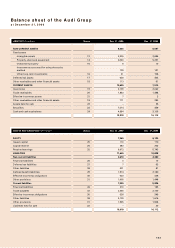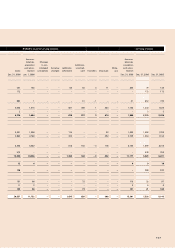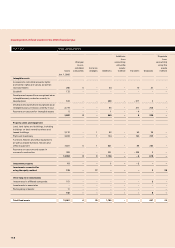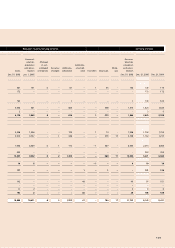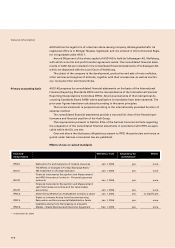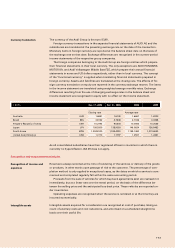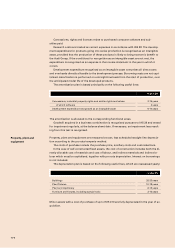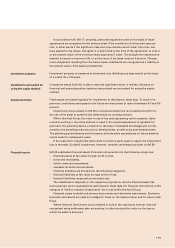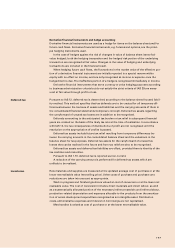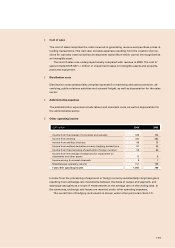Audi 2006 Annual Report Download - page 175
Download and view the complete annual report
Please find page 175 of the 2006 Audi annual report below. You can navigate through the pages in the report by either clicking on the pages listed below, or by using the keyword search tool below to find specific information within the annual report.
1 7 3
The currency of the Audi Group is the euro (EUR).
Foreign currency transactions in the separate financial statements of AUDI AG and the
subsidiaries are translated at the prevailing exchange rate on the date of the transaction.
Monetary items in foreign currency are reported at the balance sheet date on the basis of
the exchange rate on that date. Exchange differences are recognised in the current-period
income statements of the respective group companies.
The foreign companies belonging to the Audi Group are foreign entities which prepare
their financial statements in their local currency. The only exceptions are AUDI HUNGARIA
MOTOR Kft. and Audi Volkswagen Middle East FZE, which prepare their annual financial
statements in euros and US dollars respectively, rather than in local currency. The concept
of the “functional currency” is applied when translating financial statements prepared in
foreign currency. Assets and liabilities are translated at the closing rate. The effects of for-
eign currency translation on equity are reported in the currency exchange reserve. The items
in the income statement are translated using weighted average monthly rates. Exchange
differences resulting from the use of diverging exchange rates in the balance sheet and
income statement are recognised in equity with no effect on the income statement.
1 EUR= Dec. 31, 2006 Dec. 31, 2005 2006 2005
Closing rate Average rate
Australia AUD 1.6691 1.6109 1.6667 1.6320
Brazil BRL 2.8152 2.7608 2.7336 3.0368
People’s Republic of China CNY 10.2793 9.5204 10.0082 10.2025
Japan JPY 156.9300 138.9000 146.0624 136.8482
South Korea KRW 1,224.8100 1,184.4200 1,198.1480 1,273.6043
United Arab Emirates USD 1.3170 1.1797 1.2557 1.2441
As all consolidated subsidiaries have their registered offices in countries in which there is
currently no hyperinflation, IAS 29 does not apply.
Recognition and measurement principles
Revenue is always recorded at the time of rendering of the services or delivery of the goods
or products, in other words upon passage of risk to the customer. The percentage of com-
pletion method is only applied in exceptional cases, as the dates on which a service is com-
menced and completed regularly fall within the same accounting period.
Proceeds from the sale of vehicles for which buy-back agreements exist are realised not
immediately, but at a linear rate over the rental period, on the basis of the difference be-
tween the selling price and the anticipated buy-back price. These vehicles are reported un-
der inventories.
Operating expenses are recognised when the service is rendered or at the time they are
incurred economically.
Intangible assets acquired for consideration are recognised at cost of purchase, taking ac-
count of ancillary costs and cost reductions, and amortised on a scheduled straight-line
basis over their useful life.
Currency translation
Recognition of income and
expenses
Intangible assets


